Transformative Silence: Healing On A Sensational Level At A Vipassana Meditation Retreat
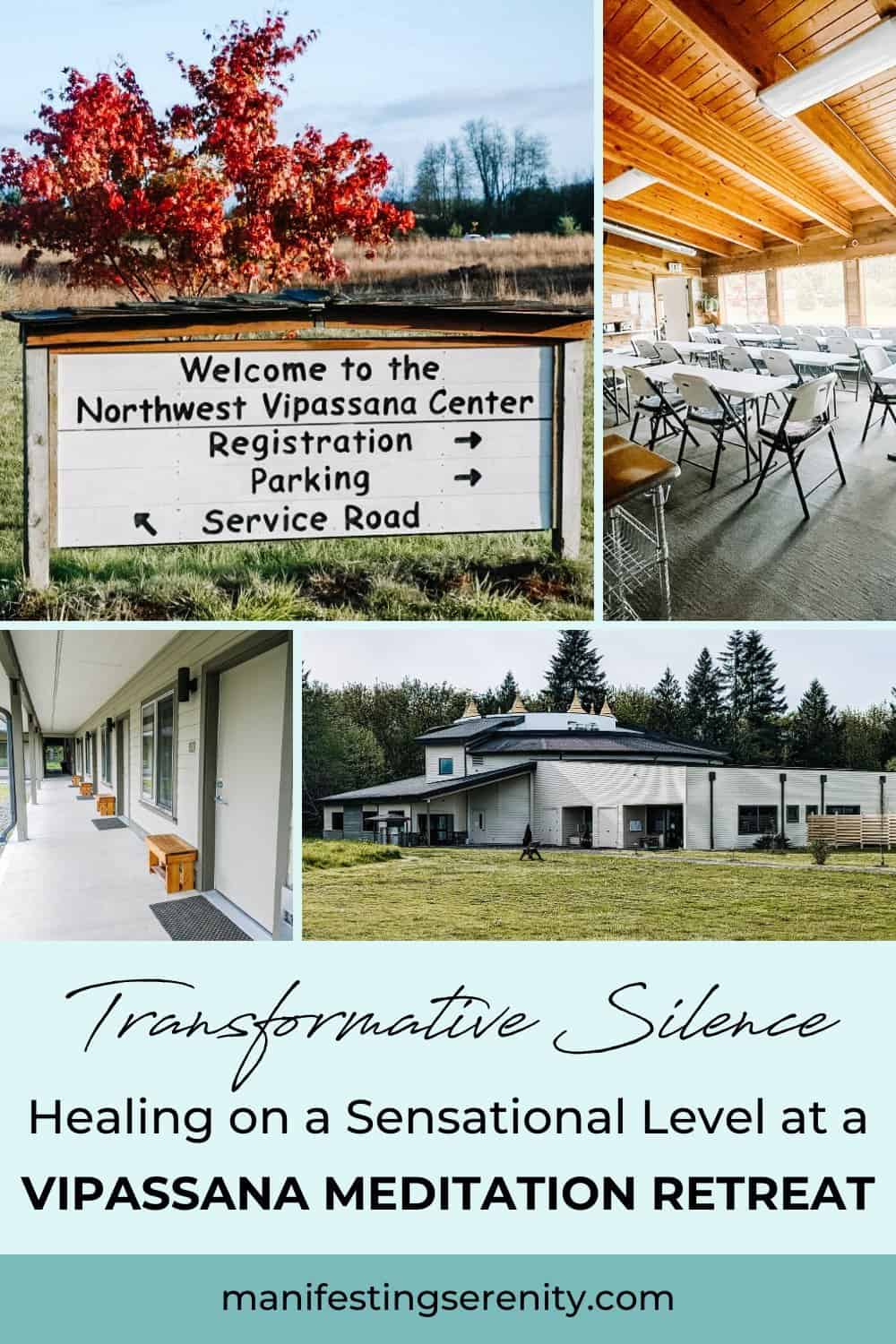
At a Vipassana meditation retreat, you immerse yourself in a practice that promotes profound self-awareness and emotional balance; silence, and mindfulness combine to offer healing on a sensational level. Whether you’re seeking to manage stress, achieve greater clarity, or find inner peace, Vipassana provides a unique path to holistic well-being.
This practice encourages you to go to the depths of your mind, embrace the stillness, and experience the unparalleled benefits of this ancient practice. Keep reading to learn more about how a Vipassana retreat can be a life-changing experience for you and a new-found life tool of freedom and inner serenity.
PS: Also, the images that I’d taken, were during the very short periods before and after the course, when I could have my phone and wasn’t cleaning or setting up my belongings. The main purpose of this article is to inspire, encourage, and support your healing and mind to try something new.
Some links in this post may be affiliate links or this article may contain sponsored content, which means if you make a purchase, we receive a small compensation at no added cost to you. As an Amazon Associate, I earn from qualifying purchases. Any purchases you make help to keep this blog going and keep the content free. I truly appreciate your support! Visit my Privacy Policy & Disclosure Policy for more info!
Washington Travel Resources Key
All resources on our site are shared to fuel and inspire you to be able to confidently, courageously, and sustainably explore this beautiful world. Here are some resources for before and after your trip!
What Is Vipassana Meditation & The History
First, I’ll give you the description given by the meditation center themselves. “Vipassana, which means to see things as they are, is one of India’s most ancient techniques of meditation.
This non-sectarian technique aims for the total eradication of mental impurities and the resultant highest happiness of full liberation.
Vipassana is a way of self-transformation through self-observation. It focuses on the deep interconnection between mind and body, which can be experienced directly by disciplined attention to the physical sensations that form the life of the body, and that continuously interconnect and condition the life of the mind. It is this observation-based, self-exploratory journey to the common root of mind and body that dissolves mental impurity, resulting in a balanced mind full of love and compassion.
The scientific laws that operate one’s thoughts, feelings, judgments, and sensations become clear. Through direct experience, the nature of how one grows or regresses, and how one produces suffering or frees oneself from suffering is understood. Life becomes characterized by increased awareness, non-delusion, self-control, and peace.”
I’ve personally perceived, felt, and shortened it to be a deep meditation that removes external influences and stimulants, allowing the body to get deeper on a sensational level. Allowing old energies to come to the surface and release, alongside quieting the mind. Allowing for more inner peace, harmony, and stillness.
It was rediscovered by Gotama Buddha more than 2500 years ago and was taught by him as a universal remedy. Alongside many other teachers, creating Vipassana Meditation Retreat Centers, and traveling to share this awareness and awakening.

How To Apply
Applications for most retreat centers open up about 3 months before the program begins. This allows all students, new or returning, to have a chance to experience Vipassana.
- Find a location that you’d like to attend
- Figure out the best times to be there (Weather, costly travel months, etc.)
- Visit the direct website of the retreat center
- Find the program that you’d like to attend; here’s the Northwest Vipassana Center event schedule.
- Read the technique and code of discipline, and ensure that you can commit to them. If you don’t think that you can commit, it might be best to revisit it later, when you are ready to commit. This will ensure that someone if fully ready will have access or the space to be able to attend.
- Decide that you’re going to be disciplined, and you’re ready for healing/the next level of peace/change.
- Put the program application open date on your calendar as a reminder.
- Apply for the program that you’d like to join. They’ve got 7-day, 30-day, 60-day silent retreat programs for students.
- Wait for a follow-up email that either shows you’re on the waiting list or that you’ve been accepted. If you see a waiting list, there are many last-minute cancellations, and they do try to get people in if they can!
- Pack, Prepare, and Attend!
Personal Note: I applied just a few days after the program had opened to accept applications, and I got put on the waiting list. But just two or three weeks later, I’d been notified that I was officially accepted to join.
Best Times To Visit Washington & The Retreat Center
As a Washington native, I must say that most of the year is rainy, but still gorgeous So, if you love the rain, forest, creeks, trees, mountain views, and wildlife; then you’ll love it any time of the year. But if you want to avoid the heat, then you’re in luck because about 70% of the year; from September through the end of May, it’s decently overcast and rainy.
However, if you want wildflowers, bright green and lush fields, as well as some sunshine; then the summer is the best time to go. The sunniest and warmest months in Washington are from May till about the beginning of September.
It’s important to note that the summers in July and August do get decently hot, climbing into 90° F (32.22 °C). The retreat center does not have AC, so definitely consider that the rooms just have a breezy window. Also, another essential factor is that Washington does have a slight fire season throughout August. However, the retreat center is surrounded by a nature preserve, so that might block smoke.
Speaking of nature preserves, so far the retreat is protected by about 50 acres of nature preserve and continuously growing in size. All gathered through donations. When walking through the fields, you’ll be able to see the varying levels of brush and foliage, as well as property lines, giving hints toward the preserve.
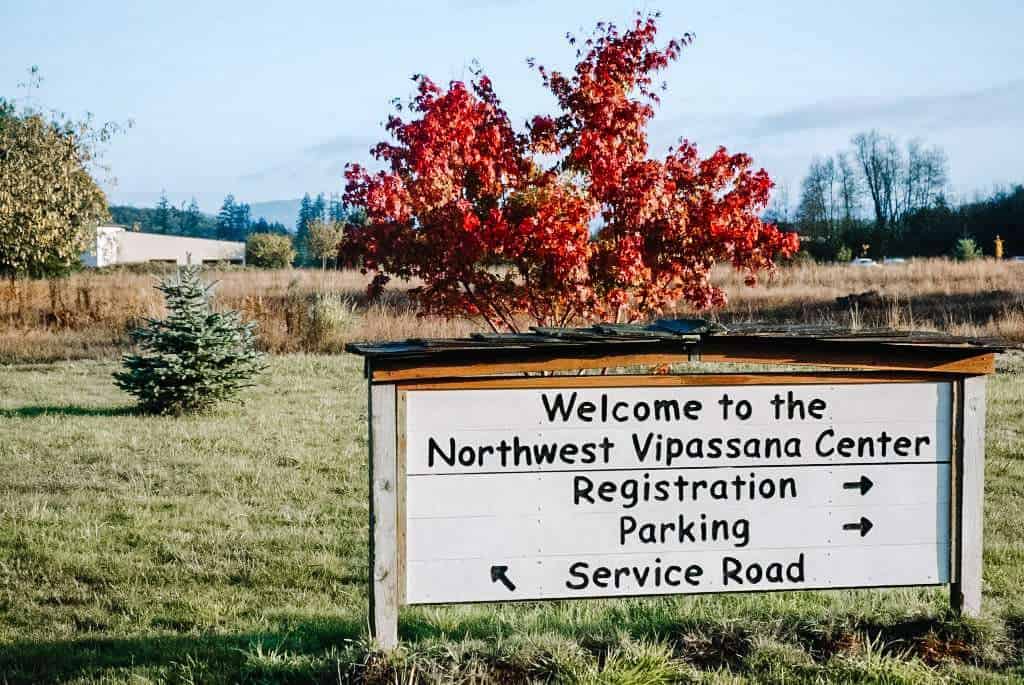
Location: How To Get There, Parking, Carpooling, Shuttle Buses
As far as the exact location of the retreat center, it’s incredibly close to Olympia, Washington, in a small city called Northwest Vipassana Center – Dhamma Kuñja. Which is near farmlands, open pastures, nature preserves, and small forests.
Located at 445 Gore Road, Onlaska, WA 98570, and can reached by shuttle, bus, carpooling, driving, and so on.
From the Seattle Airport
To get to the retreat center from the Seattle Airport would be closer to 2 hours, one way. Oftentimes, traffic is heading from Seattle to Northern Washington. So, traffic shouldn’t be as crowded or busy once passing through the outskirts of Seattle.
Shuttle to/from Seattle-Tacoma Int’l. Airport: Premier Airport Shuttle 800-962-3579 www.premierairportshuttle.com, Reservations 48 hours in advance are recommended. Drop-off points at Centralia or Onalaska. Flights should arrive before 1:00 pm at the start of the course and leave after 12:00 pm at the end of the course to accommodate travel time.
From The Everett Airport
The Everett Airport, “Paine Field,” is relatively newer, has way less traffic and construction, and is also more easily accessible by car. In fact, taxis or Ubers go directly up to the doors of the aircraft.
Getting from the Paine Field Airport to the Vipassana Center takes an average of about 2.5 to 3.5 hours. A large factor to consider is that people are usually off work in every 2-hour increment, starting at 2 pm, which can cause traffic to get quite backed up. So, that’s worth keeping in mind when planning travel time.
Parking Rules
When parking, there are multiple layers of parking spots, and you’ll be directed on where to park. When unloading and loading, it asks students not to drive directly to the dorms/rooms. Instead, they offer metal carts to transport belongings to and from rooms.
Also, throughout the course, students aren’t able to go to their cars to gather belongings. Since I didn’t drive, this wasn’t something I had to worry about. But for some, this may be a distraction or may entice people to want to leave sooner rather than commit fully. For me, since I didn’t have a ride-share out until the very end, I was even more committed.
Carpooling
When filling out an initial application, you’ll be asked if you need a ride or would like to be added to the board to offer a ride. If you need a ride, you’ll be posted to the board, and then those who are offering the ride will directly reach out to you. Then those who are offering space in the car will be given access to those who need a ride and can view their specific request. There is a link to the ride-share board in your acceptance email.
I’d added myself to the ride-share board, requesting to at least be taken to Seattle if possible. Simply because it would make it much easier for me to get home, and most people are flying into that local airport, and there’s a higher population there, so my chances of getting a ride were greater. So, if you need a ride, saying that you’re flexible and posting a couple of different locations may give you greater odds of being picked.
ADDITIONAL OPTIONS:
AMTRAK Train service to and from Centralia: 800-872-7245; Reservations required. amtrak.com From Portland and points south to Centralia or from Seattle to Centralia with stops at Tukwila (a very short taxi or transit ride from Seattle/Tacoma airport), Tacoma, Olympia, and Centralia. From Centralia to the Center, the options include private taxi, Twin Transit bus/DARTT, and ride sharing with others going to the Center.
Greyhound Bus to/from Centralia: 800-231-2222 or 360-736-9811. Download their app at www.greyhound.com.
Shuttle to/from Portland International Airport: Blue Star Airporters, 503-249-1837
Taxi Service from Centralia to the Center: Quality Taxi Service, 360-807-3923. The trip takes about 25 minutes.
Public transit from the Centralia Amtrak train station to NVC: Twin Transit offers bus service to Hwy 12 and Leonard Road (Stanley’s Store). A ride from there to the Center must be prearranged (2.7 miles, 4 minutes by vehicle). Direct transportation via DARTT. Must reserve by 4pm Pacific the day before. Located 2.5 blocks south of the Centralia Amtrak station at 212 E. Locust Street. Email/phone: Info@TwinTransit.org 360.330.2072. Website: TwinTransit.org for the schedule and their app.
Express Bus—Vancouver, BC to Seattle: Quick Shuttle, 604-940-4428 or 1-800-665-2122
Costs & Fees
Well, all Vipassana retreats are completely free, and in fact, are non-profit organizations. They are run purely on donations and by volunteers.
It’s said that the average person’s costs to attend, including lodging, electricity, food, and more, would be about $700 – $800 per person and attendance. So, once people have attended the course, they can donate to the retreat center so that future students may have the same opportunity to attend. One thing that I found pretty interesting about this is that those who have not attended a Vipassana course cannot donate.
A teaching within the course was that for those who serve or donate, it helps to relieve themselves of the ego or attachment and to deepen their connection to peace and harmony.
On the very last day, there will be someone at a table in the dining hall accepting donations, and there’s a link on the retreat’s website to accept donations too. For the Northwest Vipassana Center – Dhamma Kuñja, the donation link will also be sent to your email; it’s not posted on their main website.
Accommodations & Rooms
When it comes to accommodations and the rooms, they are quite simple, yet offer the essentials. Truly, it can be eye-opening for many people to see that they truly don’t need much.
The rooms have:
A basic bed frame
Thin mattress/bed pad
Nightstand
Lamp
Alarm clock
Tissue box
Shelves
Hangers & rod
Curtains for privacy
Shared bathroom
Small hang line for drying clothes
Heater
Window
Cleaning & restocking supplies
Rugs
Stool outside the room for shoes and sit down to put on shoes
Be sure to bring a hand towel, a body towel, a pillowcase cover, a twin mattress sheet, blankets, and/or a sleeping bag for your comfort. There’s only one washing machine on-site, so they ask that everyone bring their bedding. Plus, it’s just a bit more homey and cozy that way anyway, don’t you think?
Tip: The mattresses can be quite thin. I’d recommend a comfortable pad to add on top of them. Also, if you don’t have
Honestly, the rooms are fairly basic but clean, well-maintained, newer, and of overall good quality, but they just have the essentials.
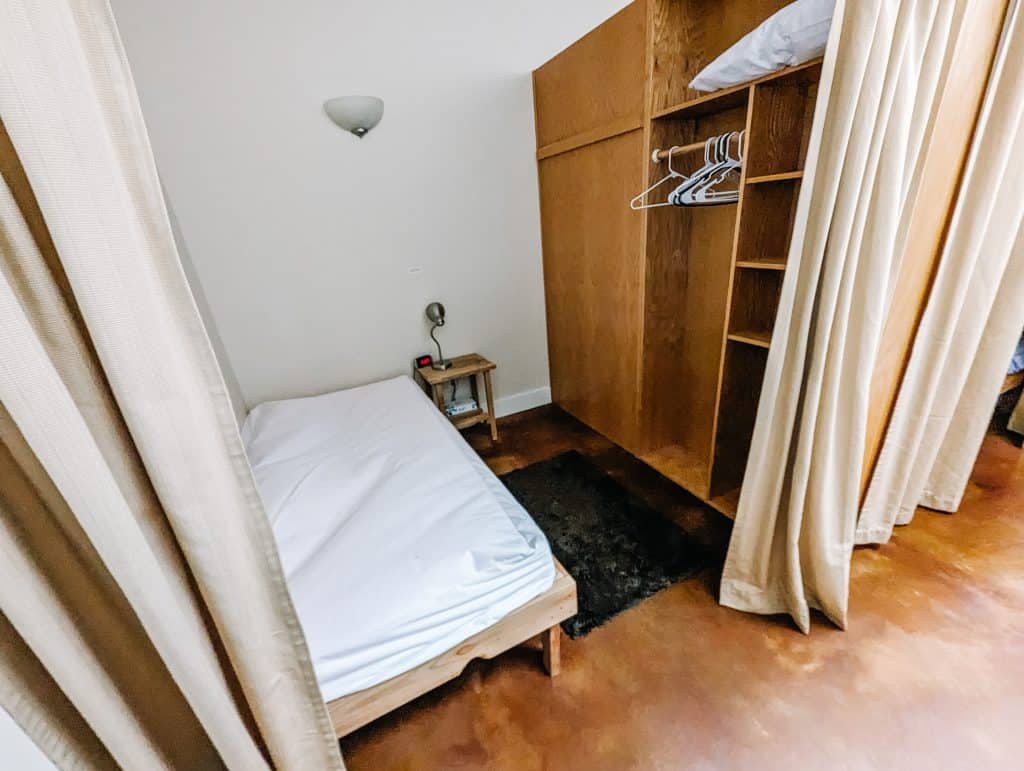
Common Areas
Each of the common areas is going to be different, especially because they keep both men and women separate. This is to ensure no distractions and pure focus. The center itself usually refers to one portion of the property as the North Side and then the other as the South Side. Not only are some areas named differently and sectioned off, but so are the kitchens, dining halls, portions of the meditation hall, and the residences as well.
Walking paths
The designated walking trail for the women’s side is called the North Walking Area, which is closest to the nature preserve, and even slightly intertwines with a section of the forest. As well as alongside a creek, is filled with benches, and thorough blossoming fields during the summer.
Whereas, the South Walking Area is the men’s side and has fields with benches with views of the mountains. Although they can be seen from the North Side, they’re a bit more prominent on the South Side.
Overall the walking paths are accessible on meal breaks, tea breaks, during rest, and if you or I are stirring and can’t slow our thoughts down. But of course, be sure to communicate with the teacher and just go on the walks during mental stirring times on occasions.
Dhama Hall
When it comes to the Dhama Hall, also known as the meditation hall, is the main gathering space for most of the retreats where the meditations and discourses are held. Which will be up to 13 hours per day, with some options to also meditate in your room or even in a private pagoda room. Which I’ll explain more in the next section.
The Dhama Hall requires everyone to be silent, take off their shoes at the entrance, no water, and no feet pointing towards the teachers (It’s seen as disrespectful), amongst other rules that will be posted and spoken about more. There’s one pad provided, each with our name on it, and a sheet to protect it. Then, if we want to customize our comforts for our sitting postures, we can choose from the provided cushions, shawls, and blankets too.
But throughout the Vipassana Meditation Retreat, this is essentially a safe and foundational space for getting more established in the meditation and for deepening our practice, as well as getting introduced to the teaching itself.
Wellness Tip: Many people brought or bought their meditation chairs, cushions, and shawls from home to make their experience more comfortable at the retreat. This can be a great option since the Vipassana Meditation Retreat Center has a very limited amount of meditation chairs. Here are some great ones to pick from –
Pagoda Rooms
A pagoda room is a room that allows you or I to get even deeper into our meditation practice by removing additional noises, lights, and helping us to remove external distractions. The room has one-floor pillow, and a light switch for darkening the room (Above and closer to the floor), and then similar cushions as the Dhama Hall for customizing comforts.
It’s important to note that for energetic purposes, everyone must be facing the center to have a proper flow of energy, switching directions or not properly facing the center can bring more challenges. Each room may have a slightly different angle, be sure to talk to the manager about this!
Dining Hall
I’ll be 100% transparent; going to the dining hall was probably something I looked forward to the most. I’d set my alarm when meditating in my room and jolt out of bed to get there right when the bell rang. The meals served were divine!!
The Dining Hall was only open for about 75% of the dedicated mealtime, and the rest of the 15% of the time was for the volunteers to be able to clean up the space. During meal times, the food is placed on a center serving table, as well as some longer tables with toppings, side snacks, or toasters. As well as a tea and drink station against the back wall.
Each of the tables, for the students (you and I) to sit at, faces either the wall or outside the window. There’s a rule to avoid eye contact, hand signals, and talking. So, they try to prevent it in many ways. I think if I were sitting directly across from someone, I’d be more likely to want to talk to them and would find it nearly impossible not to make eye contact.
Although there are a couple of chairs and benches outside, there’s no outdoor covering, and the chairs have aged quite a bit and have become a bit unstable. (Which is a great opportunity for a donation!) On a sunny day, it can still be nice to sit out in the grass, at the table, or at any of the benches too. Just be sure to bring back the dishes and don’t bring them to the rooms or Dharma Hall.
Shared Bathroom & Laundry Sinks
Although the shared bathrooms are extra and each of the rooms has its own bathroom, sometimes it can be nice to use them. Especially if you or your roommate are having any kind of digestive issues or want to use a loud blow-dryer. But they’re also great because there are two laundry sinks available for those who need to wash their clothes or spots. I sure used them, multiple times; my socks kept getting wet and mucky!
For washing, there should be a bowl or container to fill with water; pour a couple of drops of laundry soap into it and fill it with hot water. Then let your clothes soak for a minute and begin to hand scrub vigorously in multiple directions also using the sink’s ridges to scrub deeper.
Next, rinse out the soap/dirt and squeeze out all the excess water. Then for hang drying, there’s space in that restroom, outside the restroom, and also in the private rooms above the heater too.
Also, every single shared space will have a bug relocator device of some kind, whether it be the “as seen on TV” ones,
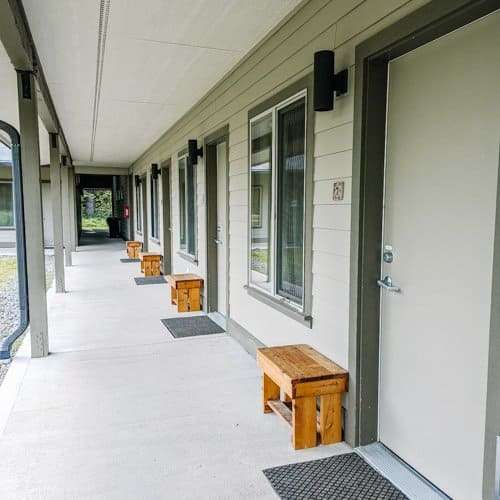
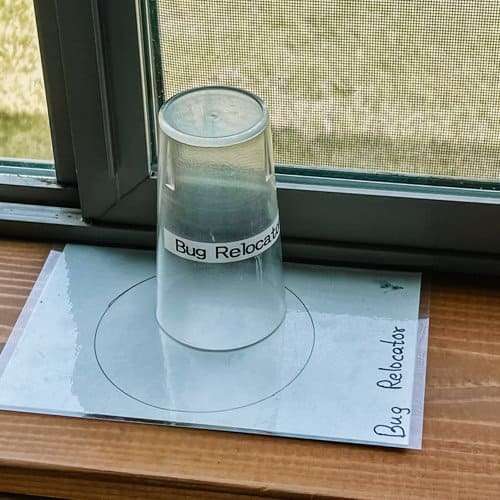

Community Meals: Food & Drink Options
On a daily basis, other than the very first day, meal times all remain about the same. Usually, breakfast is from 6:30 to 8:00 am, lunch is from 11 to noon, and then a tea break and snack is from 5 to 6 pm.
Typically, breakfast is almost always the same every day, except for about 1–2 items.
In the morning, there are:
- Bread/Toast
- Nut butters
- Jams/Jellies
- Honey
- Butter
- Rice cakes
- Fruits
- Oatmeal
- Cereal
- Plant-based milks
- Dairy milk
- Dairy Yogurt
- Granola
- Teas + Pairings
Then, for lunch, it rotates quite a bit, which is nice. All the flavors were great, they’d try to capture worldly flavors too! So, those are a bit harder to predict or note down. But we’d had stir fries, stews, burritos, rice bowls, cookies, muffins, and more! Alongside, a daily salad offering. I was pleasantly surprised by what they offered.
Lastly, for tea breaks, it was fairly simple. Simply put, it was tea, pairings, and fruit. Most of the fruit being bananas, apples, and oranges. When it comes to the tea pairings, that was honey, stevia, dairy milk, plant-based milks, sugar, etc. As for the teas, there were all sorts of flavors; from caffeinated black and green teas to spiced or soothing herbal teas.
Dietary Restrictions
When it comes to the retreat center’s ability to accommodate allergies, they are mostly vegetarian, with the ability to also offer vegan. As well as offering gluten-free or nut-free options. But beyond that, things aren’t necessarily labeled, and they often needed to be asked by the students what it contained for those with more serious/different allergies.
Personally, as a vegan, I’d found it to be quite accommodating, but I would say that half of the breakfast options were limited, and I think I could have 1–2 desserts while I was there. But I’d gone into it thinking I was only going to have soup, salad, and rice. So, I was/am still happy with the diversity offered.
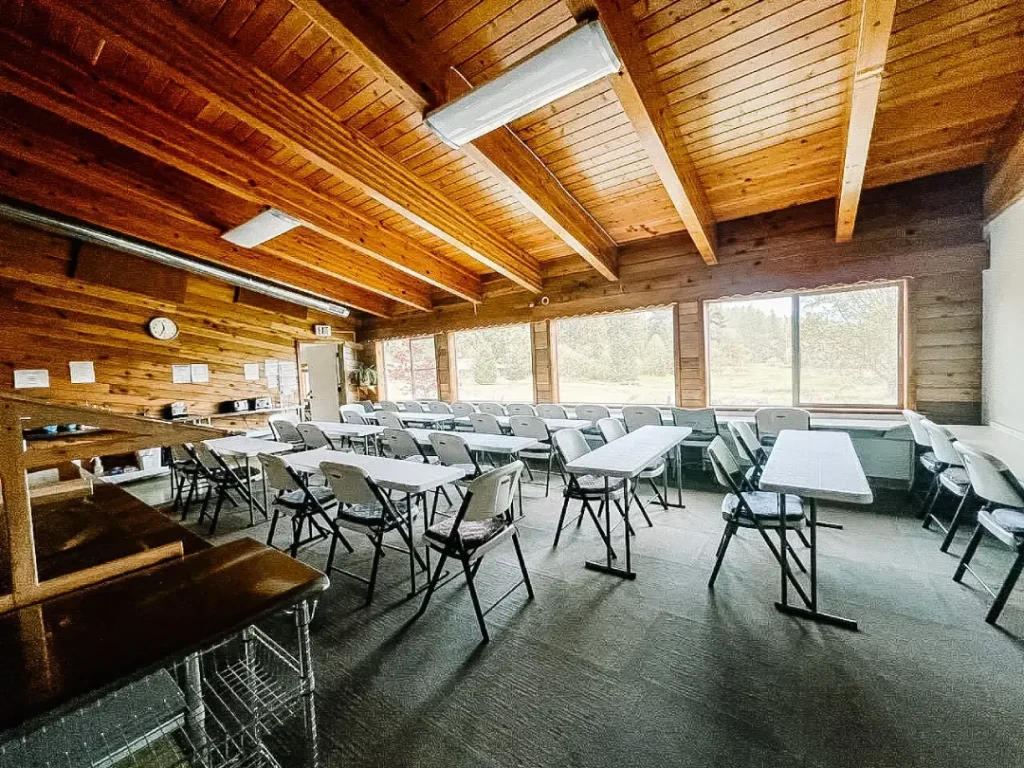
What To Pack
Whether you’re coming during the winter, spring, fall, or summer, these are some main essential items you’ll want to bring!
Wardrobe:
- Clothes for 12 days, ensuring that they are loosely fitted, cover private parts, and are appropriate. I personally bought or borrowed clothes specifically for this retreat.
- 12 pairs of socks (I like a fresh pair of socks for each day!)
- 1 pair of slip-on shoes, for between the rooms and the Dhamma hall
- 1 pair of comfortable walking shoes in the wet fields
- 2 jackets—one rain jacket, and one winter/cold-weather jacket
- 1-2 sweaters/hoodies
- Sun hat (If desired)
- Beanie (if your head gets pretty cold easily)
Tip: Umbrellas are already provided, so you don’t need to bring those!
Beverage Essentials:
The retreat cups/dishes cannot leave the dining hall and often times the dining hall where the tea station and water spigot are, is closed for most of the day, except during meal times. So, having your own cups for tea/coffee and water is a must!
- Reusable water bottle
- Reusable tea/coffee cup
Room:
- Hand towel
- Body towel
- Pillowcase
- Twin fitted sheet
- Blankets and/or Sleeping Bag
Alongside your traditional self-care essentials, medicines, vitamins, and other items you bring on all your short travel trips.
Also, some people do choose to bring their own meditation essentials and comforts along with them too. Here are some that people chose to bring or that I had seen:
Rules & Recommendations
So, before we dive into all the rules and what not to bring, just note that it’s because there’s a specific method and reasoning behind it. Which is to remove the stimulation, allow ourselves to connect to our minds and bodies better, as well as to not generate any more negativity subconsciously. There’s a greater purpose behind it.
NO❌:
- Talking, hand gestures, notes, or eye contact during the course
- Crossing over to the other side with the opposite sex/gender (Separation of Men and Women)
- Intoxicants and Drugs
- Yoga and Physical Exercise
- Showering and laundry during meditation hours
- More than one shower per day
- Showers longer than 5 minutes
- No washing machines or dryers
- No outside communications during the course
- Music, Reading, and Writing
- Shoes inside the rooms
YES ✅:
- Full dedication to the course schedule and duration of the course
- Talking on the first and last day
- Respect for other’s silence during the course
- Outside food or beverage accommodations
- Recommended: Eating ¾ of a plate for deepening meditation practices
The Course Timetable
The following timetable for the course has been designed to maintain the continuity of practice. For best results, students are advised to follow it as closely as possible.
4:00 am Morning wake-up bell
4:30-6:30 am Meditate in the hall or your room
6:30-8:00 am Breakfast break
8:00-9:00 am Group meditation in the hall
9:00-11:00 am Meditate in the hall or your room according to the teacher’s instructions
11:00-12:00 noon Lunch break
12 noon-1:00 pm Rest and interviews with the teacher
1:00-2:30 pm Meditate in the hall or your room
2:30-3:30 pm Group meditation in the hall
3:30-5:00 pm Meditate in the hall or your own room according to the teacher’s instructions
5:00-6:00 pm Tea break
6:00-7:00 pm Group meditation in the hall
7:00-8:15 pm Teacher’s Discourse in the hall
8:15-9:00 pm Group meditation in the hall
9:00-9:30 pm Question time in the hall
9:30 pm Retire to your room–Lights out
Also, no need to memorize this timetable, it’ll be posted in the rooms, public meeting spaces, and you’ll be given a paper version to take around with you.
After adding up all the hours of meditation, it’s about 11.5 hours of meditation a day. For those that may feel a little overwhelmed by that, most of the “meditate on your own” time slots are also optional. So, it’s valuable to check in and not push yourself too hard or even past your breaking point.
There had been a handful of times that I had a pounding heading, felt nauseous or flat out exhausted and adjusted my schedule accordingly. Which sometimes meant, just going for a walk, taking a nap, or even just laying in bed and resting. So, use your best judgement and care for yourself, but also know that that place is one of the best places to do the inner work. Once we get home, everything changes.
STORY TIME & PERSONAL EXPERIENCE
Right before attending the Vipassana Meditation Retreat, I’d gone on a road trip with my 5-year-old nephew (his first road trip) and sister. We’d approached about a week or a week and a half on the road, and believe me, I was ready for some silence!! So, after being all talked out, I was ready to deep dive into this retreat, and barely even spoke on the first day of arrival. I was socially exhausted and looked forward to it!
Days 1-4
For the first three days, I’d followed most of the schedule, curiously exploring this new practice, and trying to overcome posture pain (stagnant energy rising), and how to get more comfortable. PS: Everyone has this, but it can be overcome! As you go through your discourses, you’ll see and hear what I mean! Each day bring a new challenge, another layer of energy to work through, a lightness from release, and a deeper peace.
After day three, I’d begun having night terrors that had me tossing and turning all throughout the night, our teacher called them “negative Sankaras”. Which is similar to negative energy, she’d said that they were coming to the surface to be released. I felt so incredibly guilty that I was disturbing my bunk mate, after all, I’m a sleep talker! Whoops! These nightmares would come and go throughout the week until the eighth day.
Day 5 & 6
Early on the morning of day five, I could truly feel that different people were having a variety of energies that they were facing. While I was eating breakfast, I could feel an intense amount of sexual energy roll off the person next to me, as if they were overcoming some kind of addiction or trying to overcome their cravings. I’d noticed changes in breathing, sweat, slightly more noises in her eating, and empathetically feeling her energy over mine. I couldn’t help but notice, but also lend full support and assistance in her release, while practicing energetic boundaries of my own. When someone feel something, I don’t have to take that on, nor is it my energy to hold or work on. Which I was reminded of. This was also the day we had the first two hour Vipassana sit, that we were asked not to move or break focus, this was a day of strength.
Next up was day five and six, my personal favorite. In the morning, I was looking out the window, while eating breakfast, and began to over pour with joy. I’d begun to giggle, having a funny memory of my nephew and I on his very first road trip. I had to quickly use my hand to cover my mouth because I’m not supposed to be disturbing others. But I did get the girl next to me to smile, whoops! ha!
During the final and last group meditation of the day, I’d felt and seen golden rain pour across my back and body, giving me subtle feelings of pure bliss and ecstasy. Then my vision went blank, bringing multiple different colors of confetti; pink, gold, and silver. I’d not wanted to end this session, but it brought me so much hope, motivation, and pure joy of the result.
Day 7
On day seven, the earlier morning vipassana meditations were easy, I had such a free flow of energy throughout my body, and I thought the day was going to be filled with a similar ease. But, that was no the case. After lunch, we were granted access to these Pagodas. These Pagodas are individual rooms, that remove lights, noises, and any other forms of distractions. As I walked around and heard of them, I was excited, but I was overwhelmed with negative feelings as I stepped into them. Initially, my mind had begun running wild with thoughts like, “This is a mental prison or mental institution.”, “The silence and darkness might be what death is like.” To step out of the overwhelm, I’d gone for a walk, giving myself a mental break and noticing I wasn’t yet ready to step back into it. Of course, I knew that I was here on my own accord, but there was a new layer of shadow work/Sankaras that I needed to push through, behind that door. After 3-4 hours of mental spinning and trying to pull myself out of dark thoughts, I knew that this was something that I could not do again today, but after a deep rest, I’d try again the next day!
Day 8
On day 8, I surprisingly awoke from nothing but pleasant dreams, despite my experience in the Pagoda. But I was riddled with the feelings of wanting to escape, leave, or just be done with my experience. It’s almost as if fear had consumed me. I also felt a deep longing and desire to speak to others, and simply just feel a social or connective comfort.
But I gave myself a compassionate pep talk, knew I committed to my core, and decided to challenge my fears. I pushed through, and tried the Pagoda again! I’d sat in a different posture, after the teacher told me that the energy flowed in a specific direction, and the negative thoughts/memories poured to the surface and began to release. Yet another layer of release and peace.
Day 9 & 10
When it came to day 9, all my energy stagnation, Sanakaras, and emotions began to thrash around in my body and come to the surface in other ways. Before they were thoughts, memories, and dreams. But now they were feelings of nausea, dizziness, headaches, and gas. At one point, I remember that I’d gotten so dizzy, laid in bed to relax, and saw an array of shapes and colors moving around. Some people could describe it similarly to hallucinations.
All this continued for the 10th day and had even gotten to a point where I was unable to do any sitting meditations, I could only lay down. But I’d continued to try during our group meditations. Well, my perseverance paid off, and I was able to have a massive breakthrough.
I had a very intense vision repeat. This vision was of my sister, nephew and myself all living in a house; someone had come by the house while we were away and smashed the window. We’d thought they were gone, and my sister went to look into the window, that the person had smashed. Suddenly, he’d grabbed her, thrown her to the floor, and begun beating her with a bat. My nephew cried, unsure of what to do, and looked at me. I began to think and feel how I’d wanted to react.
In this vision, my next choice of action was my breakthrough. I’ve been someone who doesn’t like to get involved in drama, harm a being, but I’m also protective of those that I love and care for. So, I was conflicted on how to react.
Initially, I felt that I wanted revenge, and to hurt him back, as well as to protect my family. However, what I wanted to do before felt a bit excessive, revenge is never the answer. In my family, they are fighters. But what do I feel is right or want to choose?
But as I dug deeper, I’d begun to come to peace with wanting to subdue someone so that they are not a harm to my family nor themselves. Which can be a way to protect, secure, and ensure to not overly hurt someone in the process. At that moment, I’d decided that I wanted to be a pacifist – this was my breakthrough! As well as an entirely new layer and level of peace for myself.
Deciding On If A Vipassana Meditation Retreat Is Right For You?
Well, you’ve made it this far, especially past the rules and the “not to do” section. So I think that counts for something and shows that you just might be ready to push through and find a new layer of inner peace and harmony.
Vipassana isn’t about religion, where you come from, or what you look like; it’s about truly harnessing your own inner peace and feeling it at a sensational level and in totality. Nobody else can get there and feel it for you, only you can!
Looking To Do Some More Healing? Try Exploring These Articles A Bit More:
You May Also Like...
Serenity
Hey there, It's so great to have you here, As a sustainable travel blogger, I try to create original, captivating, and quality content to support and inspire you! So, if you feel called to comment any praise or ideas, I encourage you to. Your input is valuable to me! Pssstttt...Don’t forget to subscribe to the newsletter to get those goodies that are only available to those on the list. I don't want you to miss out on anything! Have a blissfully serene day, and thank you for being here, and I hope to see more of you!♡

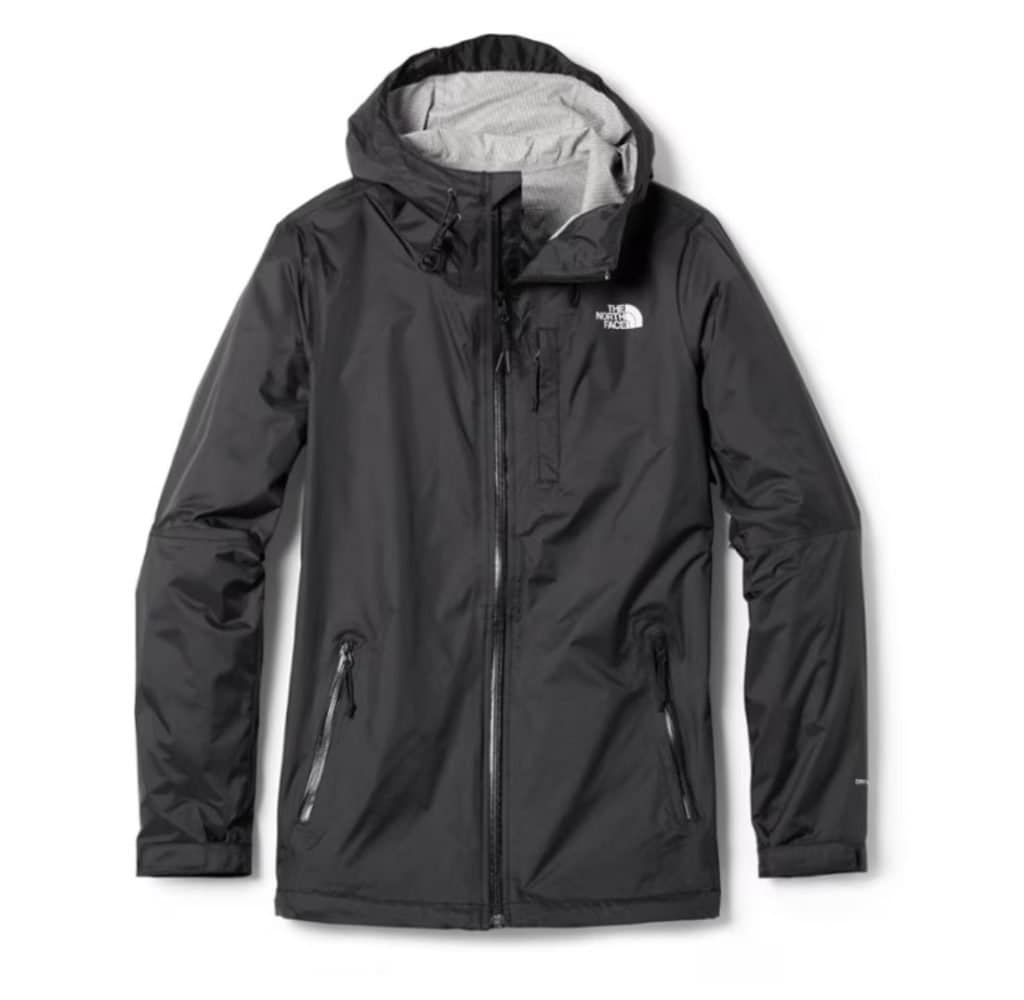
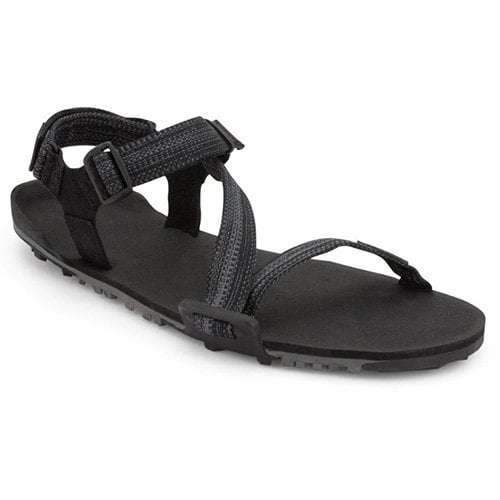


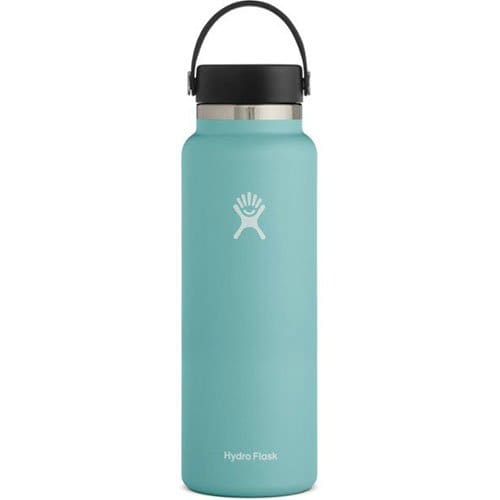





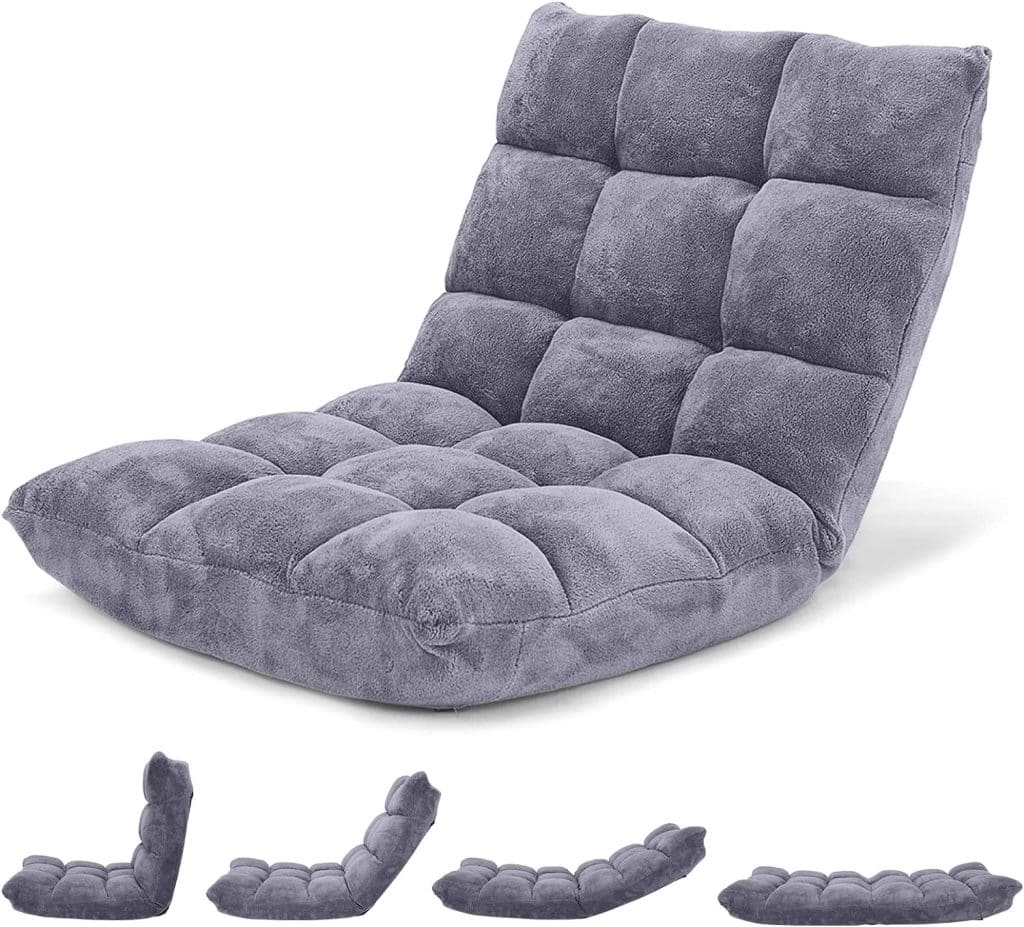

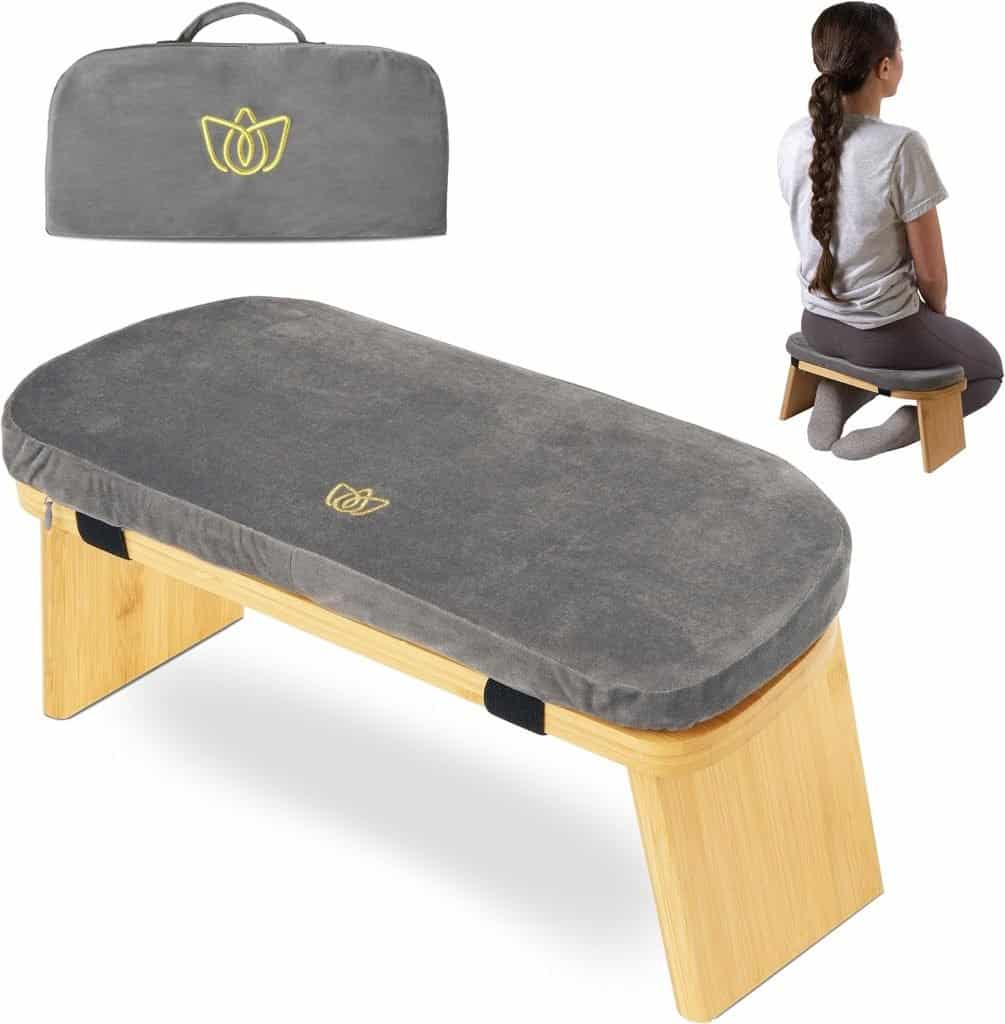
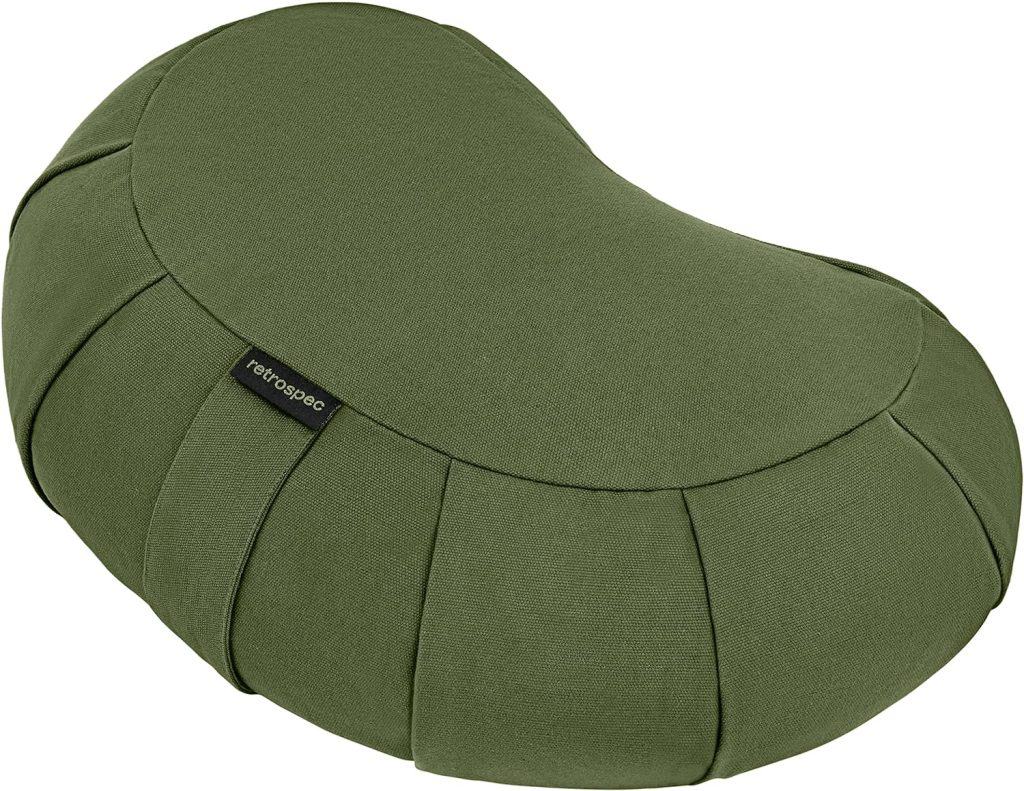
Lucio Wisozk
You’re a true authority in your field.
Mathilde Quis
Somebody essentially help to make significantly articles Id state This is the first time I frequented your web page and up to now I surprised with the research you made to make this actual post incredible Fantastic job
Nathen Ullam
Normalmente eu não leio artigos em blogs, mas gostaria de dizer que este artigo me forçou a tentar fazê-lo. Seu estilo de escrita me surpreendeu. Obrigado, ótima postagem
Naomie Veritatis
Ive read several just right stuff here Certainly price bookmarking for revisiting I wonder how a lot effort you place to create this kind of great informative website